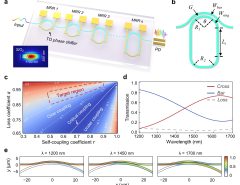QuantOptiNet
Elevator Pitch: QuantOptiNet leverages groundbreaking quantum tensor network technology to solve high-stakes optimization problems up to 10 times faster and more accurately than traditional methods, propelling major industries into a new era of efficiency and performance.
Concept
Advanced quantum computing solutions for complex optimization tasks in various industries using novel tensor network techniques.
Objective
To provide meticulously accurate and accelerated solutions for complex optimization issues in industries like logistics, finance, and data analytics through quantum computing.
Solution
Using a unique family of tensor networks outlined in recent research, QuantOptiNet leverages constrained matrix product states to solve complex constrained combinatorial optimization problems more effectively than existing methods.
Revenue Model
Subscription-based for continuous access to the optimization platform, along with tiered pricing depending on the scale and scope of the problems being solved.
Target Market
Large-scale enterprises in logistics, finance, and data analytics sectors with substantial optimization needs; research institutions requiring high-level computation.
Expansion Plan
Start with dominant sectors and gradually expand to other industries like energy management and supply chains; scale the underlying quantum computing infrastructure.
Potential Challenges
Massive initial investment in quantum computing capabilities, complexity of technology leading to higher barrier to entry for new clients, ensuring data security.
Customer Problem
Existing solutions for combinatorial optimization are often too slow or incapable of accurately handling complex, constrained problems, leading to inefficiencies and increased costs.
Regulatory and Ethical Issues
Compliance with international standards on data security, intellectual property concerns regarding unique algorithms, quantum technology regulations.
Disruptiveness
QuantOptiNet could drastically speed up and improve the accuracy of solving optimization problems which would significantly overhaul how primary industries manage their resources and logistics, representing a seismic shift in computational approaches.
Check out our related research summary: here.



Leave a Reply